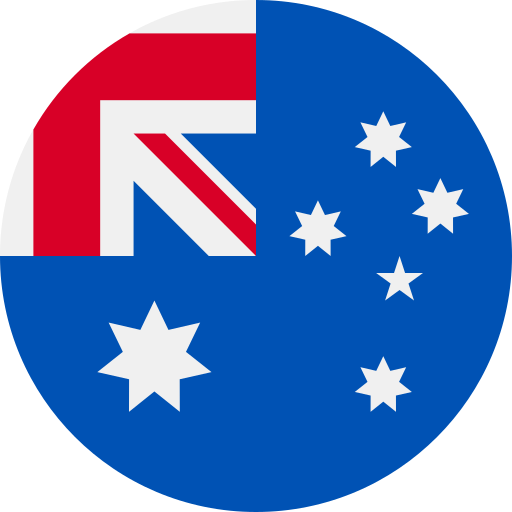Key Takeaways
- Australian English Origins: Australian English is rooted in British English but has evolved with unique vocabulary and pronunciation, making it distinctly different from other dialects.
- Countries Influenced: Aside from Australia, countries like New Zealand, Papua New Guinea, and Indonesia incorporate elements of Australian English within their local vernaculars, creating a rich linguistic tapestry.
- Cultural Integration: The dialect features a blend of Indigenous languages and multicultural expressions that enhance communication and foster connections across diverse audiences.
- Distinctive Vocabulary: Unique terms such as “arvo” (afternoon) and “bush” (rural areas) are crucial for effective engagement in conversations involving Australian English speakers.
- Pronunciation Nuances: Key pronunciation traits include pronounced vowels and rising intonation at the end of sentences, which can affect clarity and understanding in voiceover work or casual dialogue.
- Voiceover Considerations: Understanding the cultural context and linguistic variations of Australian English is essential for voice talent to ensure authenticity and relatability in their performances.
Ever wondered where Australian English is spoken beyond the shores of Australia? You might be surprised to learn that several countries embrace this unique dialect, blending it with their own local flavors. From the sun-soaked beaches of New Zealand to the bustling cities of Papua New Guinea, Australian English has made its mark in diverse regions.
Overview Of Australian English
Australian English represents a distinctive blend of linguistic traits influenced by British roots, local Indigenous languages, and multicultural elements. This dialect features unique vocabulary, pronunciation, and grammatical structures that set it apart from other English varieties.
You’ll notice specific terms in Australian English that might confuse those unfamiliar with the dialect. For instance, “arvo” refers to the afternoon, while “bush” signifies rural or wild areas. These colloquialisms enrich everyday conversations and reflect Australia’s diverse culture.
Pronunciation also distinguishes Australian English. Vowels tend to be more pronounced compared to American accents. The rising intonation at the end of sentences can make statements sound like questions—an aspect that’s often highlighted in voiceovers featuring this accent.
In various countries where Australian English is adopted, including New Zealand and Papua New Guinea, you’ll find these characteristics intermingled with local influences. Such blending creates a dynamic language experience that resonates with both native speakers and listeners who encounter it through media like films or voiceover work.
Overall, understanding the nuances of Australian English opens doors for effective communication across different contexts—from casual chats to professional settings involving voice talent or artistic expressions in audio formats.
Countries That Use Australian English
Australian English extends beyond Australia, influencing several countries. Its unique characteristics resonate in various regions, blending seamlessly with local dialects.
Australia
Australia serves as the birthplace of Australian English. The dialect incorporates British roots alongside distinct vocabulary and pronunciation patterns. You’ll find terms like “bush” for rural areas and “arvo” for afternoon peppering everyday conversations. Understanding these nuances is vital when engaging with voice talent or crafting content suited for an Australian audience.
New Zealand
New Zealand reflects a fascinating blend of Australian English and its own local vernacular. While Kiwis often adopt Aussie phrases, they also embrace unique expressions influenced by Māori culture. When considering voiceovers aimed at New Zealanders, it’s essential to be aware of this linguistic mixture to ensure authenticity in tone and delivery.
Papua New Guinea
Papua New Guinea showcases a rich tapestry of languages, including influences from Australian English. In urban areas, you may encounter a mix of Pidgin and standard English interspersed with Aussie slang. This diverse linguistic environment can impact how voice actors approach projects targeting PNG audiences, integrating cultural sensitivities into their performances.
Indonesia
Indonesia’s connection to Australian English is primarily through tourism and business interactions. Although Indonesian languages dominate daily communication, Australians frequently visit Bali and other destinations where locals might use bits of Aussie slang to connect better with tourists. For voiceover projects tailored to Indonesian audiences, understanding this context helps create relatable content that resonates culturally while maintaining clarity in messaging.
Impact Of Australian English Globally
Australian English influences various regions, reflecting unique cultural and linguistic elements. This dialect enriches communication and plays a vital role in voiceover projects across different countries.
Cultural Influence
Australian English serves as a bridge between cultures. It incorporates Indigenous languages and multicultural expressions, fostering connections with audiences worldwide. In regions like New Zealand and Papua New Guinea, the local vernacular intertwines with Aussie slang, creating a familiar atmosphere for listeners. For voice actors targeting these markets, understanding cultural nuances is essential. Adapting your delivery to resonate with local audiences enhances engagement and authenticity.
Linguistic Variations
Linguistic variations of Australian English manifest through distinct vocabulary and pronunciation patterns. Unique terms like “arvo” or “bush” may confuse non-native speakers but are integral to the dialect’s charm. Voice talent must grasp these variations to convey messages effectively in their performances. Recognizing differences in intonation or phonetic traits ensures clarity when reaching diverse audiences, whether it’s for tourism-related content or educational material aimed at Indonesian listeners seeking an authentic experience.
Understanding the impact of Australian English globally empowers you to craft compelling voiceovers that connect deeply with varied audiences. Embracing this knowledge leads to more impactful communication strategies tailored to specific cultural contexts.
Conclusion
Australian English extends its reach far beyond the shores of Australia. This unique dialect enriches communication in countries like New Zealand Papua New Guinea and Indonesia. By blending local influences with distinct vocabulary and pronunciation patterns it creates a vibrant linguistic landscape.
Understanding these variations is crucial for anyone working in voiceover or content creation aimed at global audiences. Embracing the cultural nuances of Australian English not only enhances engagement but also fosters deeper connections with listeners. As you navigate this diverse dialect remember that its charm lies in the distinctive expressions that reflect Australia’s rich cultural heritage.
Frequently Asked Questions
What is Australian English?
Australian English is a unique dialect that originated in Australia, characterized by its distinctive vocabulary, pronunciation patterns, and influences from British roots and local Indigenous languages.
How has Australian English spread globally?
Australian English has been adopted in various countries like New Zealand, Papua New Guinea, and Indonesia, where it blends with local languages and cultures. This global presence enriches communication across diverse audiences.
What are some unique features of Australian English?
Key features include unique vocabulary (e.g., “arvo” for afternoon), distinct pronunciation patterns (like pronounced vowels), and a rising intonation that can make statements sound like questions.
Why is understanding Australian English important for voice actors?
Voice actors need to understand the nuances of Australian English to connect authentically with audiences in different regions. This knowledge helps tailor voiceovers for effective communication.
How does Australian English influence voiceover projects in different countries?
In places like New Zealand and Papua New Guinea, the blend of Australian English with local vernacular affects how voiceovers are delivered, enhancing engagement through cultural relevance.
Can non-native speakers easily understand Australian English?
While some terms may be confusing for non-native speakers, they are integral to the dialect’s charm. Understanding these variations is crucial for effective communication in diverse contexts.
What role does culture play in the use of Australian English?
Culture significantly shapes how Australian English is used globally. It incorporates Indigenous languages and multicultural expressions that foster connections between speakers from different backgrounds.







